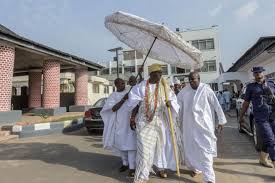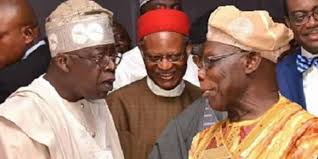Ooni of Ife social outings are instructions from Ifa Oracle

By Otunba Moses Olafare
Ile-Ife, Nigeria –
In a time when cultural survival depends on visionary leadership, few monarchs embody divine responsibility like Oba Adeyeye Enitan Ogunwusi, Ojaja II, the 51st Ooni of Ife and spiritual Overseer and Head of the Yoruba race.
To understand his reign is to revisit one of the darkest chapters in Yoruba history: the Kiriji War (1877–1893). This civil war—fought between Yoruba subgroups—left a trail of destruction, disunity, and spiritual fragmentation. Though it ended in a truce, the deeper wounds lingered. The political authority of the Yoruba people weakened. Their military cohesion was lost. The cultural center—Ile-Ife—stood in mourning.
In the wake of that disarray, the oracle of Ifa gave a stern command:
> “A time will come when the Yoruba nation must be reunited. The Ooni then must not remain hidden. He must be visible, vocal, and ever-present—to awaken the soul of his people.”
Otunba YMO
That time came during the reign of Ooni Ojaja I (Orarigba), enthroned in 1878. The oracle gave him a clear mandate: step out, engage, lead visibly. But Ooni Orarigba, though spiritually inclined, chose seclusion. He reigned for just two years, passing in 1880 at the age of 42, leaving a throne and a prophecy unfulfilled.
The sudden death of Ojaja I was a major turning point. It marked the first time in Yoruba history that the Oracle’s mandate to be visible and active remained unfulfilled, creating a void in leadership. The mantle of the throne passed to Ooni Olubuse I, who, for the first time, broke the age-old tradition of royal seclusion. As the first Ooni to leave Ife and engage directly with his people, he fulfilled the oracle’s instruction in a way his predecessors never had. His bold decision to step out of the shadows and engage the Yoruba nation directly marked the beginning of a new era for the throne of Ife.
In 1903, Ooni Adelekan Olubuse I, the 46th Ooni of Ife, made a historic journey to Lagos at the invitation of the British colonial Governor Sir William MacGregor to adjudicate a dispute between the Akarigbo of Remo and the Elepe of Epe. This was the first time an Ooni ever left Ile Ife since the inception of the monarchy, which dates back centuries.
The journey was unprecedented and caused a significant stir in Yorubaland. Out of respect for the Ooni, all Yoruba kings along his route, including the Alaafin of Oyo and and Oba of Benin vacated their palaces and towns, as it was considered sacrilegious for any lesser king to occupy their throne while the Ooni was away or passing through.
Upon arrival in Lagos, Ooni Olubuse I was carried in a hammock under royal umbrellas and gave his ruling on the dispute, reportedly without directly facing the colonial governor, reflecting his revered spiritual status.
This event marked Ile-Ife’s first direct encounter with British colonial power and began a shift in traditional Yoruba customs, eventually allowing subsequent Oonis to travel outside their domain.
Over a century later, the royal line returned to that same house. In 2015, Prince Adeyeye Enitan Ogunwusi, a direct descendant of Ojaja I, was crowned as Ojaja II.
Again, the oracle spoke:
> *”For every year your forefather reigned, you must invest seven in restoring what was lost. These early years of your reign must be marked by divine* *engagement—to redeem a throne once neglected and to secure its future. You must go where others hesitate,* *speak where others are silent, and stand where the race needs strength.”*
Though reserved by nature, Oba Adeyeye submitted his will to divine instruction. From the moment he ascended the throne, his reign has been defined by uncommon visibility, connectivity, and presence—from the grassroots to the global stage. He has shown up at festivals, inter-tribal peace talks, youth forums, traditional alliances, and diaspora events.
To some, his constant public engagement is puzzling—seemingly at odds with the typical image of a reclusive monarch. But what many do not realize is this: every Ooni receives a unique spiritual instruction tied to his reign. For Ojaja II, that instruction is unmistakable—to be visibly and actively present as a unifying figure across all spheres.
This is not self-promotion. It is spiritual obedience.
To unite a fragmented people.
To reinforce the legacy of the race.
To restore the soul of the throne.
To preserve the dignity of Oduduwa’s descendants.
While some may not fully understand the depth behind his public presence, it must be noted that no true Ooni governs by convention alone. He rules by divine order. And Adeyeye must follow the mandate given for his throne, regardless of whose ox is gored—for the survival and future of the Yoruba race at large.
His reign is not for comfort, but for destiny.
His visibility is not ambition—it is assignment.
His obedience is not preference—it is prophecy.
*And until that spiritual task is complete, he must not relent!*



